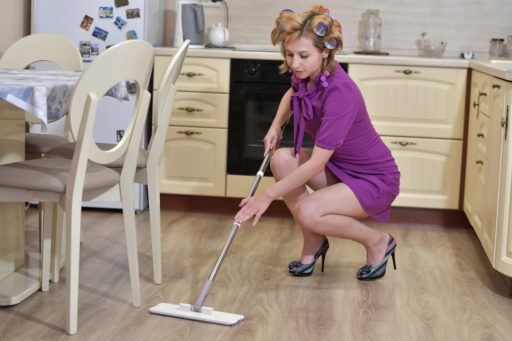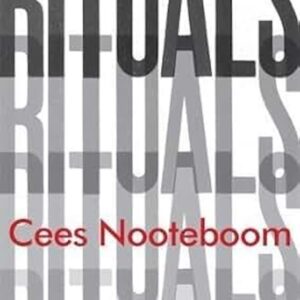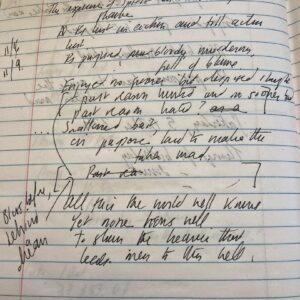Years ago now, I heard the novelist Hilma Wolitzer being interviewed on public radio about her novel The Doctor’s Daughter, her first book after a decade of silence. What had she been doing in all that intervening time, the interviewer asked?
She said something then that has stuck with me ever since: that the action of reorganizing a closet and feeling pride in that accomplishment could be every bit as fulfilling as, say, writing a novel. And it was those kinds of matters she’d been focused on mostly for the past ten years.
At that moment, I happened to be cleaning up my husband’s and my own bedroom. I had the volume turned up, as I dusted the dresser, then shook out and smoothed the feather duvet. (My mother would have been horrified that it was already afternoon, and I was making up the bed only now?)
My oldest child was a toddler then, and I was working part-time. I ended up reading The Doctor’s Daughter, loved it, and can now remember nothing about it at all. Those were the days of long exhaustion; the days that I was at home were long, long struggles of putting things right and then watching them fall apart all over again. Then three days a week, I’d go to the office where my home life was presumed not to exist.
Thinking about that afternoon, I recently looked up Hilma Wolitzer’s author page on Amazon, and this quotation of hers jumped right out at me:
“I’m a late-blooming novelist and I mostly write about domestic situations. I truly believe that what happens in bedrooms and kitchens matters as much as what happens in boardrooms and statehouses.”
It is telling, though — at least it is to me — that Wolitzer’s own novelist daughter Meg Wolitzer has crafted a very different oeuvre. If you’ve read her novels — The Interestings, which tracks a group of friends at an arts camp for the gifted, or The Female Persuasion, the story of a Steinem-like influencer and her protégée, who is ultimately disillusioned — the focus is very much on stature, achievement, and agency in the public realm.
Which is fine, of course. I don’t want to diminish any of those capacities, or the work of the activists who made that agency possible. I vote, I have a job, I have no problem driving alone at night in the dangerous part of town.
At the same time, though, I think our art and literature continue to neglect the richness of the private and domestic sphere. And by private and domestic sphere, I basically mean the world of women.
Now, you might think from the above that I had gone completely mad: Haven’t we just spent an entire YEAR in our houses, with work piled up on schoolwork piled up on yesterday’s unwashed dishes? And the national dialogue has been pretty good, hasn’t it, about recognizing the fact that these burdens fall disproportionately upon the women?
I once heard a female academic talk about the necessity of “de-gendering the private sphere,” and the past year would certainly seem to confirm that, what with children (including my own) and baskets of dirty laundry creeping into the backgrounds of Zoom calls.
It’s still not an even trade, though. All the laments about the impossible situation into which families have been dragged focus almost solely on teasing out the policy threads of family life and work to try to find a way of only shoving the domestic sphere back more successfully into the shadows—the kids back to school, everybody back to the office, the house left to the dog, fights about politics on Twitter.
But I’d thought we were beyond “binaries” by now.
And as much as I love my work, the promise of a richly elaborated and ceremonious home life is important to me — both in life and art. I don’t want to live in a world where nobody makes the bed; and furthermore, somebody needs to starch and iron the pillowcases.
It’s neither my faith tradition or my political orientation, but I’ve become enraptured, for example, by the Theology of Home books published during the last couple of years, and the translation of the liturgical into the gestures of everyday existence.
I can hear the grumbling of some of my fellow writer-friends about how gender-essentialist and privileged this all sounds, all rather precious and twee like the trend of young traditional Catholic women wearing black lace veils to Mass. (I’m one of them, kind of, though I am not Catholic.) I am not, I am afraid, sufficiently endeavoring to Smash the Patriarchy.
Rather, I want to pull the ground out from under the patriarchy, and the whole worship of what Atlantic writer Derek Thompson memorably described as “Workism,” — in the same way that I’d enjoin my fellow Christians that it is the Virgin Mary who is the example for all Christians to emulate, female and male. And thus give proper place to the domestic sphere whose tendrils snake through the fabric of our existence.
I’m reminded once more of Mrs. Ramsey, the mother of eight and philosopher’s wife in Virginia Woolf’s To the Lighthouse, who’d made her husband’s work possible, absorbed the billows of family life, and nurtured the young artist Lily Briscoe, who outlives her. It’s the painter, Lily, who “gets to tell” the story, who’s the one who presumably triumphs.
But it is Mrs. Ramsey — mending, and serving a dinner of beef daube — who I remember from reading the novel.
Caroline Langston was a regular contributor to Image’s Good Letters blog, and is writing a memoir about the U.S. cultural divide. She has contributed to Sojourners’ God’s Politics blog, and aired several commentaries on NPR’s All Things Considered, in addition to writing book reviews for Image, Books and Culture, and other outlets. She is a native of Yazoo City, Mississippi, and a convert to the Eastern Orthodox Church. She lives outside Washington, D.C., with her husband and two children.





